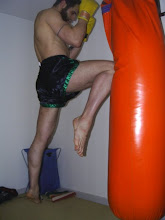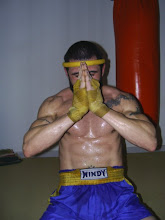 How many types of Chi Gung are there?
How many types of Chi Gung are there?Well, as for styles of chi gung (qigong/ ch'i kung) there are thousands, known and unknown, as it is an ancient and diverse art. Basically they all come down to one of the following, or a combination of the following:
1) Chi gung for health maintenance, regeneration and longevity; I call this "Wellness Chi Gung
2) Martial arts chi gung'- this can be sub-divided into the internal (soft, esoteric) styles and the external (hard, exoteric) styles...which exist on a continuum, not in conflict with each other.....so, Hung Gar Kung Fu uses many external martial chi gung methods, but also soft; tai chi chuan uses mostly soft/ inner martial chi gung methods, but can also use hard methods (fighting/sparring isn't always soft!)
3) Spiritual chi gung - these are inner meditative methods to clarify and raise our spirit; also to embrace and learn to embody higher virtues and principles (compassion, wisdom, harmony, balance, confidence, etc...)....it may or may not be religious, that is up to the practitioner...the art of Usui Reiki Ryoho is one of the best and most effective yet simple forms of spiritual chi gung out there, orginating with the great teacher, O-Sensei Mikao Usui...
So, basically, all chi gung methods fall somewhere within one of these categories; some are very comprehensive and complete systems; some are very narrow (like 'medical chi gung')....chi gung can be simply defined as, 'working with the chi/ life-force' the goal being to achieve whatever the intention of the style/ art is....chi gung must always be practiced with respect for all life, never for selfish or negative purposes- dedicate all to the highest good of all...
Classically, in China, chi gung came from and was influenced by these sources: Taoism, Buddhism, Chinese Martial Arts, Chinese Medicine, ancient Chinese Shamanism.
What types of Chi gung are you teaching?
I teach all of these, 'wellness chi gung,' 'martial chi gung (inner and outer, soft/hard),' and 'spiritual chi gung.' My methods come from my 23 yrs. of experience with a very diverse group of teachers, including 17 yrs. full-time with my teacher, as a lineage disciple.
Why is internal chi good for those who practice martial arts?
well, quite simply, there is no getting away from 'internal chi' so if we can learn good methods which will allow us to be in tune with our life-force/ chi and learn how to work with it- not against it- everything we do in life can be enhanced; including our martial arts practice.
Are there any martial arts that use chi?
As I stated in answer to the previous question, there is no getting away from chi! So, yes, all martial arts use chi- everything that lives, breathes, and exists- all creation- is chi of one form or another, constantly and endlessly transforming....now, some martial art styles and traditions/ lineages realized this long ago and have developed methods to work with the life-force/chi in many, many ways....the names of the styles and their reputations are not the real thing- the student needs to find a teacher who has learned these methods and is willing to share them....in this day and age there is no good reason for secrecy, for the vast majority of chi gung methods....see if the teacher exhibits the qualities he/ she is teaching (and keep in mind we are all human, perfect/ ideal standards are hard to reach!), is she/ he healthy? strong voice, good posture, etc....or, can they fight, if it is a martial chi gung art....are they loving, compassionate, and insightful if it is spiritual chi gung?
How does chi gung work?
Well, the exact answer depends on the type of chi gung method/ style it is...but basically what they all have in common is this: as living beings we have life-force (chi, prana, ki, breath of God, mana, etc...); the Cosmos/ Universe is also a creation of life-force, untold and limitless forms of energy....the life-force of the Cosmos and our life-force interact....so, in chi gung we learn methods which are designed around this simple, natural but often-times overlooked fact....it is like the nose on our face, or the fish in water- so completely natural that we forget about it...with good chi gung training we learn to make use of the natural gifts we have been born with, and to maximize them for our health and longevity, and many other purposes, such as: art, business, harmony in family and community, sports, martial arts, and so many others....
What / Where did chi gung originate?
Chi gung actually pre-dates human civilization, going way back to the beginnings of our race....so, the most ancient lands and cultures: China/ Asia; India; the Middle East; Africa, this is where chi gung originated....the Chinese and Indian cultures, being so old and having an unbroken history, is where chi gung and yogic methods were the most highly developed; they then spread outwards everywhere that people went and are....the situation today is quite interesting as all of these methods are blending and new methods are being created at rates never seen before...it is very important that the essential principles and concepts are preserved as this process unfolds....this way the art of chi gung will stay alive and pure, not be diluted into some fake, cheap, and unwholesome imitation...(like McChi Gung!- stay away!)...
Who can I contact if I wish to know more?
There are links on my website to excellent sources of info, see http://www.reikibutterfly.com/. also, I would recommend the book, 'Harnessing the Power of the Universe' by Dr. Daniel Reid, it is a well written, easy to read, and comprehensive introduction to all of these things I have talked about...
Thank you!
Michael S. Fuchs, Sifu
www.reikibutterfly.com
Facebook: Michael s. Fuchs






















 Taegeuk is the Kata for Taekwondo, these images are taken from choisuta.com, I hope this can be a good help for those who needed these information.
Taegeuk is the Kata for Taekwondo, these images are taken from choisuta.com, I hope this can be a good help for those who needed these information.































